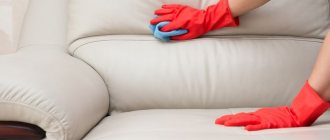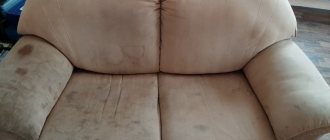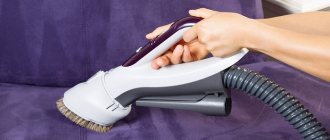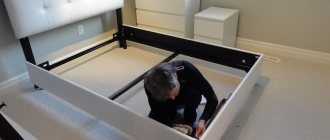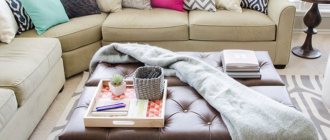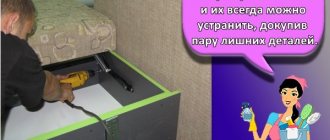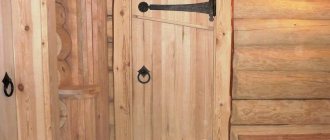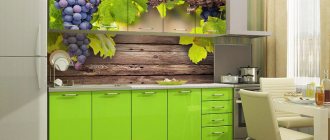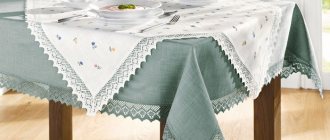- August 16, 2020
- Repair Tips
- Valery Lysenko
Furniture breaks down during use, sometimes this becomes a reason for replacement. But more often than not, the damage is minor, which means it will be cheaper to repair your favorite table or chair, and it will last for a long time. How to repair chipboard, what tools and materials are needed for this, we will understand further.
Reasons for furniture breakdown
The main cause of breakdowns and damage to furniture are the shortcomings of particle board, the main of which are:
- weak resistance to moisture - even moisture-resistant chipboard is destroyed when water gets under the coating, although this happens more slowly;
- poor retention of fasteners - screws and hinges.
This can be avoided if you handle the furniture carefully and carefully. How to repair chipboard if damaged? Usually, this requires simple woodworking skills and simple tools.
Typical chipboard damage
To be precise, our furniture is made of chipboard - this is the official name for particle board, and chipboard means wood-laminated plastic. But it turned out that the second abbreviation took root, and it became the name of exactly the material that we are used to seeing in our homes.
The most common damage to chipboard panels can be considered the following:
- Scratches, cuts and cracks on the surface.
- Destruction of material in places where hinges and other metal parts are attached.
- Damage due to moisture.
Moisture getting inside the slab through damage to the coating will lead to irreversible changes in the material - swelling and loss of strength. Also, chipboard products cannot withstand dynamic loads; the hinge attachment points can break off along with part of the slab.
Chipboard repair in each of the listed cases will differ in complexity, tools and materials used. This will be discussed in more detail below.
How to screw in a screw correctly - instructions for women (including blondes)?
How to properly screw in a screw/self-tapping screw without a screwdriver - instructions for women (including blondes):
what materials and tools are required?
work procedure/instructions?
What to pay attention to/special points?
First you need to decide what kind of “thing” it is: a screw, a bolt, a self-tapping screw or a screw.
It is very important to know what and how to use.
After all, there is shoe polish and there is body polish.
And there is one for the face, eyelids, private parts, hands, feet, etc.
If you mix it up, it can, of course, go wrong (for men, they are somehow indifferent, as long as there is no wax on their faces), but for us, real blondes, everything should be correct and every cream has its place.
If the “thing” has a phallic shape (an elongated body and head) and is also made of metal, this is what we need!
If the body has a conical tip like a carrot and a thread (a curly groove, like a spiral), it is a screw.
If the thread is more pronounced (like a mascara brush for curling eyelashes) and the tip is sharp as a needle, it is a self-tapping screw.
If the body is smooth, threaded and ends like the half of a sausage stick, it is a screw or bolt.
A cog differs from a bolt in its head.
If the cap has a transverse stripe or a cross (like on a pregnancy test), it is a cog.
If the head is so brutal, powerful and hexagonal, it’s a bolt.
The type of screw you need to use depends on what material you screw into.
Tools used in furniture repair
Tools for chipboard restoration are selected depending on the type and complexity of the damage.
- Electric drill with a set of drills.
- Flap grinding wheel.
- Felt pad for polishing.
- Screwdriver.
- Circular Saw.
- Milling machine.
- Construction hairdryer.
- Sandpaper, brushes, roller.
Of course, not all of these tools will be used when repairing chipboards, but it is better if they are available.
Helpful tip: A flap wheel is indispensable when sanding large surfaces. But it has a significant drawback - the petals become clogged with particles of old paint, varnish or resin, and the circle ceases to perform its functions. This is easy to fix, just put it in water for 10-15 minutes, clean it with a wire brush, and it will be as good as new. You can clean any abrasive in the same way.
What to do if you need a small brush, but don’t have one at hand? Linden bark will help out - a stick cut out of it needs to be dipped in boiling water, dried and one edge riveted with a hammer. You will get a good brush, which also has one advantage - the dried tip does not need to be cleaned, you just need to cut it off and throw it away. The edge needs to be riveted again with a hammer, and the brush is ready.
How to screw a self-tapping screw into metal or wood, what is better to use - a screwdriver or a screwdriver
Watching a master at work, many people think that sawing, planing, and hammering is easy, especially with modern tools. But once you pick up this tool, it turns out that even such a simple task as screwing a self-tapping screw into metal or wood is not as easy to complete as it seemed. Any task requires skill, experience and knowledge of many nuances of technology. However, every owner should be able to perform minor repairs around the house. So that every time you don’t have to look for someone to hang a new shelf or fix a torn picket fence. We suggest starting with something simple and learning how to fasten with self-tapping screws.
Materials
For the simplest cosmetic repairs to chipboard, a wax pencil will be enough. For small scratches, soft wax is suitable, and for larger scratches, hard wax is suitable.
To restore broken parts of chipboard, you should stock up on PVA glue or epoxy resin.
Quite often, furniture edges and fasteners need to be replaced; they must be purchased in advance. To restore the appearance you will need varnish.
If the tools and materials are prepared, let’s take a closer look at how to repair chipboard furniture with your own hands.
Useful tips and tricks
When purchasing furniture, you should pay attention to specific sets of hinges in terms of their durability. Properly selected hinges help to open or close the door efficiently, and drawers will not get stuck on the guides. Hinges for kitchen furniture are used quite intensively, so it is necessary to choose reliable and durable options and not skimp on hinges.
Door hinges must be of high quality.
The exceptions are those found in rarely used furniture, such as a pantry. The most common problems with hinges are loosening or pulling. A broken hinge cannot hang in the same place where it was before.
It should be moved 1-2 cm up or down. Changes should concern not only the door, but also the cabinet itself. Driving the screws should be preceded by creating delicate holes.
When the mechanism becomes loose, it needs to be moved to another location.
Installing hinges on the cabinet is necessary for self-assembly of furniture or in case of breakage of parts. This process does not take much time and is quite accessible even for inexperienced craftsmen. The only thing worth paying attention to is correct and clear labeling. The success of all subsequent actions and positive work results depend on this stage.
Repairing the hinge mechanism does not require much skill or experience.
When installing hinges, follow the instructions; when disassembling and restoring, take your time, let the materials dry well. Restored doors and high-quality installation of hinges can last a long time.
If you choose complex fittings and have no idea how to install hinges, then it is best to contact a professional.
Please follow the instructions during installation.
When working, take your time, carefully measure each part of the fastener so that the markings coincide with an accuracy of 1 mm. If this is your first time doing installation or restoration, then watch the training lessons; they clearly show all the stages of these processes.
It is necessary to carefully mark the installation location.
Chipboard is characterized by problems with hinges, but they are easily solved. In order to solve the problem quickly, use the instructions and carefully follow each step you perform.
Installing hinges of a simple design does not require any special skills. They are easy to install if you follow each step step by step.
Cleaning and repair of mechanisms
Moving parts are the most susceptible to breakdown; parts of these parts become unusable over time and require replacement. You can independently repair or replace elements such as rollers, springs, meshes, rivets and slats.
Mechanisms on chipboard furniture also need to be cleaned periodically. Each of their mechanisms requires an individual approach to diagnosis and repair, but the general operating procedure is as follows:
- Dismantle the mechanism.
- Take it apart into its component parts.
- Install the damaged element.
- Make the necessary replacement.
- Reassemble the mechanism and place it in place.
Regular lubrication of moving parts will help prevent or delay minor breakdowns. Lubrication reduces friction of metal elements and also protects against rust.
When to contact a specialist
You should contact a specialist in case of serious damage, for example, broken furniture, and lack of special skills and knowledge. Also, you should not attempt to repair expensive or memorable furniture yourself, as there is a risk of causing irreparable damage to it.
If furniture made from chipboard is severely damaged, you should contact a specialist.
If you need not just minor repairs or minor elimination of defects, but a serious comprehensive restoration, then it should definitely be entrusted to the appropriate specialist or cabinetmaker.
Before you repair chipboard furniture with your own hands, you need to evaluate your strengths and select suitable materials. If you work carefully, you can achieve a high-quality update in the appearance of products.
